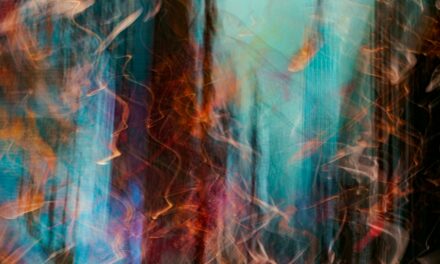Nude figure drawing is a time-honoured practice that has been integral to the development of artistic skills for centuries. This form of art allows artists to explore the human form in its most natural state, providing a unique opportunity to study anatomy, proportion, and movement. The act of drawing the nude figure is not merely about replicating what one sees; it is an exploration of the human experience, a celebration of the body in all its diversity and complexity.
From the classical works of the Renaissance to contemporary interpretations, nude figure drawing has served as a vital conduit for artistic expression and understanding. The significance of nude figure drawing extends beyond mere aesthetics; it is a profound engagement with the human condition. Artists often find that working from a live model fosters a deeper connection to their subject, encouraging them to appreciate the subtleties of form and the nuances of light and shadow.
This practice not only hones technical skills but also cultivates an appreciation for the beauty and vulnerability inherent in the human body. As artists immerse themselves in this discipline, they embark on a journey that challenges their perceptions and invites them to confront their own beliefs about beauty, identity, and the human experience.
Summary
- Nude figure drawing is a traditional art form that involves drawing the human body in its natural form, without clothing.
- Ethical guidelines are crucial in nude figure drawing to ensure the safety, comfort, and respect of the model and participants.
- Creating a safe and respectful environment in nude figure drawing sessions involves setting clear boundaries, providing privacy, and maintaining professionalism.
- Understanding consent and boundaries is essential in nude figure drawing to ensure that all participants feel comfortable and respected.
- Communication and feedback play a vital role in nude figure drawing sessions, allowing for open dialogue and constructive criticism.
The Importance of Ethical Guidelines in Nude Figure Drawing
As with any artistic practice, ethical considerations play a crucial role in nude figure drawing. Establishing clear ethical guidelines is essential to ensure that all participants—both artists and models—feel safe, respected, and valued throughout the process. These guidelines serve as a framework for maintaining professionalism and fostering an environment conducive to creativity.
They help to mitigate potential discomfort or misunderstandings that may arise during sessions, allowing artists to focus on their work without distraction. Moreover, ethical guidelines are vital in addressing power dynamics that can exist between artists and models. The model’s vulnerability in being nude can create an imbalance that must be acknowledged and navigated with care.
By adhering to ethical standards, artists demonstrate their commitment to treating models with dignity and respect, recognising their autonomy and agency. This not only enhances the quality of the artistic output but also contributes to a more positive and enriching experience for everyone involved.
Techniques for Creating a Safe and Respectful Environment
Creating a safe and respectful environment for nude figure drawing requires intentionality and thoughtfulness. One effective technique is to establish clear boundaries before each session begins. This includes discussing what is expected from both the model and the artists, as well as addressing any specific concerns or preferences the model may have.
By fostering open dialogue, artists can ensure that everyone feels comfortable and secure, which ultimately enhances the creative process. Another important aspect of cultivating a respectful atmosphere is the physical space itself. The studio or drawing area should be arranged in a way that promotes privacy and comfort for the model.
This might involve using screens or curtains to create a sense of enclosure, as well as ensuring that the temperature is appropriate for nudity. Additionally, providing amenities such as robes or blankets can help models feel more at ease during breaks. By prioritising the model’s comfort, artists demonstrate their commitment to creating a supportive environment that encourages artistic exploration.
Understanding Consent and Boundaries in Nude Figure Drawing
Consent is a fundamental principle in any artistic practice involving the human body, particularly in nude figure drawing. It is essential for artists to understand that consent is not merely a one-time agreement but an ongoing dialogue that must be respected throughout the duration of the session. Models should feel empowered to communicate their boundaries clearly, whether it pertains to poses, duration, or any other aspect of the drawing process.
Artists must be attentive to these boundaries and responsive to any changes that may arise during the session. Furthermore, it is crucial for artists to recognise that consent can be revoked at any time. If a model expresses discomfort or wishes to adjust their pose or take a break, it is imperative that artists respect these requests without question.
This understanding fosters an atmosphere of trust and mutual respect, allowing both parties to engage more fully in the creative process. By prioritising consent and boundaries, artists not only uphold ethical standards but also contribute to a more positive and enriching experience for everyone involved.
The Role of Communication and Feedback in Nude Figure Drawing Sessions
Effective communication is at the heart of successful nude figure drawing sessions. Artists should feel encouraged to engage with models throughout the process, asking questions about comfort levels or seeking clarification on poses. This dialogue not only helps to establish rapport but also ensures that both parties are aligned in their expectations for the session.
Additionally, providing constructive feedback can enhance the model’s experience by affirming their contributions and encouraging them to explore different poses or expressions. Feedback should be approached with sensitivity and care, recognising that models are often vulnerable in their roles. Artists should strive to create an environment where models feel valued and appreciated for their participation.
This can be achieved by offering positive reinforcement and acknowledging the model’s efforts in helping artists develop their skills. By fostering open lines of communication and providing thoughtful feedback, artists can cultivate a collaborative atmosphere that enriches both the artistic process and the overall experience.
Addressing Cultural and Societal Taboos Surrounding Nude Figure Drawing
Challenging Taboos
It is essential for artists to engage with these taboos critically, recognising how they may influence perceptions of nude figure drawing within their communities.
Fostering Education and Awareness
Addressing these cultural sensitivities requires a thoughtful approach that emphasises education and awareness. Artists can benefit from exploring historical contexts surrounding nudity in art, as well as contemporary discussions about body positivity and representation. By fostering an understanding of these issues, artists can challenge prevailing narratives and contribute to a more inclusive dialogue about the human form.
Enriching Practice and Promoting Acceptance
This not only enriches their own practice but also encourages broader acceptance of nude figure drawing as a legitimate and valuable artistic endeavour.
Tips for Maintaining Professionalism and Respect in Nude Figure Drawing
Maintaining professionalism and respect in nude figure drawing is paramount for creating a positive experience for all involved. One key tip is to establish clear guidelines regarding behaviour during sessions. Artists should refrain from making inappropriate comments or engaging in behaviour that could be perceived as disrespectful or objectifying towards the model.
This includes avoiding distractions such as excessive talking or using mobile devices during sessions, which can detract from the focus on the artistic process. Additionally, it is important for artists to approach their work with humility and gratitude. Recognising the courage it takes for models to pose nude can foster a sense of appreciation that permeates the entire session.
Artists should express their thanks at the end of each session, acknowledging the model’s contribution to their artistic development. By prioritising professionalism and respect, artists create an environment where creativity can flourish while honouring the dignity of all participants.
Embracing the Artistic and Humanistic Value of Nude Figure Drawing
In conclusion, nude figure drawing stands as a powerful testament to both artistic expression and human connection. By embracing ethical guidelines, fostering open communication, and addressing cultural taboos, artists can create an environment that celebrates the beauty of the human form while respecting individual autonomy. This practice not only enhances technical skills but also invites deeper reflections on identity, vulnerability, and the shared human experience.
As we continue to navigate societal perceptions surrounding nudity and art, it is essential to champion the value of nude figure drawing as an enriching practice that transcends mere aesthetics. By cultivating an atmosphere of respect and understanding, artists can honour both their subjects and themselves, ultimately contributing to a more inclusive dialogue about art and humanity. In doing so, they reaffirm the significance of this age-old tradition as a vital component of artistic exploration and personal growth.
If you are interested in exploring different art techniques, you may want to read the article An Introduction to the Art Technique: Sfumato Technique. This article delves into the fascinating world of sfumato, a painting technique that creates soft, blurred edges and transitions between colours. Understanding different art techniques can enhance your appreciation for nude figure drawing and help you develop your own unique style.
FAQs
What is nude figure drawing?
Nude figure drawing is the practice of drawing the human figure in its natural state, without clothing. It is a common practice in art education and is often used to study the human form and improve drawing skills.
What are the ethical guidelines for nude figure drawing?
Ethical guidelines for nude figure drawing include obtaining consent from the model, creating a respectful and professional environment, and ensuring that the artwork is used and displayed in a respectful manner. It is important to maintain the dignity and privacy of the model at all times.
What techniques are used in nude figure drawing?
Techniques used in nude figure drawing include gesture drawing, contour drawing, and shading to capture the form, proportions, and details of the human figure. Artists may also use various drawing materials such as charcoal, graphite, or ink to create their artwork.
Why is nude figure drawing important in art education?
Nude figure drawing is important in art education as it allows students to study and understand the human form in a way that is not possible with clothed models. It helps artists develop their observational and drawing skills, as well as their understanding of anatomy and proportion.
Are there any legal considerations for nude figure drawing?
Legal considerations for nude figure drawing may vary depending on the location and context in which the artwork is created and displayed. It is important to be aware of local laws and regulations regarding nudity and the display of nude artwork. Additionally, it is important to obtain proper consent and release forms from the models.


